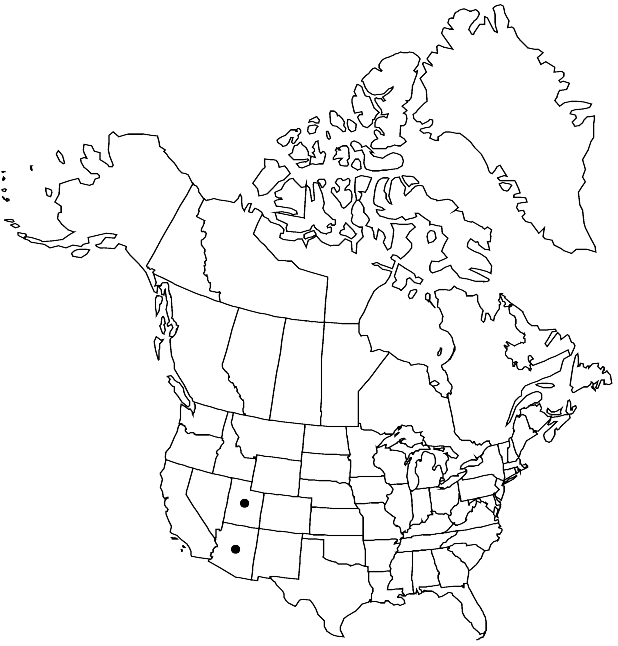Thelypodiopsis ambigua
Contr. Gray Herb. 204: 138. 1973.
Annuals or biennials; (glaucous), glabrous throughout. Stems branched distally, (3–) 5–10 dm. Basal leaves rosulate; petiole 0.3–3 cm; blade oblanceolate, (1.5–) 2.5–14.5 (–20) cm × 10–30 (–42) mm, margins dentate to subpinnatifid. Cauline leaves sessile; blade lanceolate to oblong, base auriculate, margins usually entire, rarely dentate. Racemes lax or dense. Fruiting pedicels horizontal to divaricate-ascending, often upcurved, 6–9 mm. Flowers: sepals erect, purple, 5–7.5 × 1.7–2.5 mm; petals purple to lavender or white, spatulate, 10–14 × 1.2–1.7 mm, claw 4–6 mm; median filament pairs 4–6 mm; anthers linear, 3–4 mm; gynophore (slender), 3–6 (–9.5) mm. Fruits ascending to divaricate or descending, straight or slightly recurved, torulose, 4.5–9 cm × 1.1–1.4 mm; ovules 80–112 per ovary; style cylindrical, (stout), 0.3–1 mm; stigma 2-lobed. Seeds 1.2–1.5 × 0.8–1.2 mm. 2n = 22.
Phenology: Flowering Mar–Jun.
Habitat: Pinyon-juniper desert shrub communities, dry hillsides
Elevation: 800-1600 m
Distribution

Ariz., Utah.
Discussion
Of conservation concern.
Thelypodiopsis ambigua is known from Kane County in Utah and from Coconino, Mohave, and Yavapai counties in Arizona.
Selected References
None.
Lower Taxa
"elongated" is not a number."thick" is not a number."dm" is not declared as a valid unit of measurement for this property."dm" is not declared as a valid unit of measurement for this property.